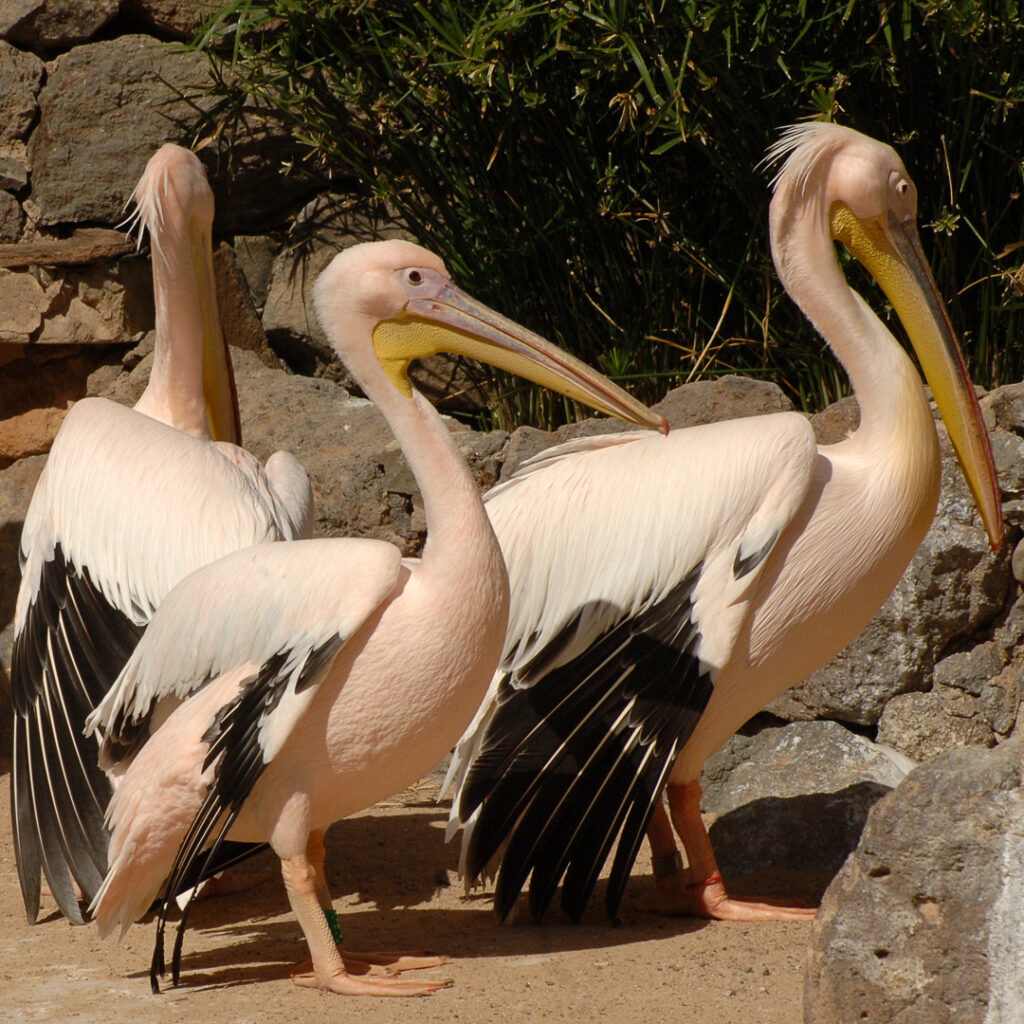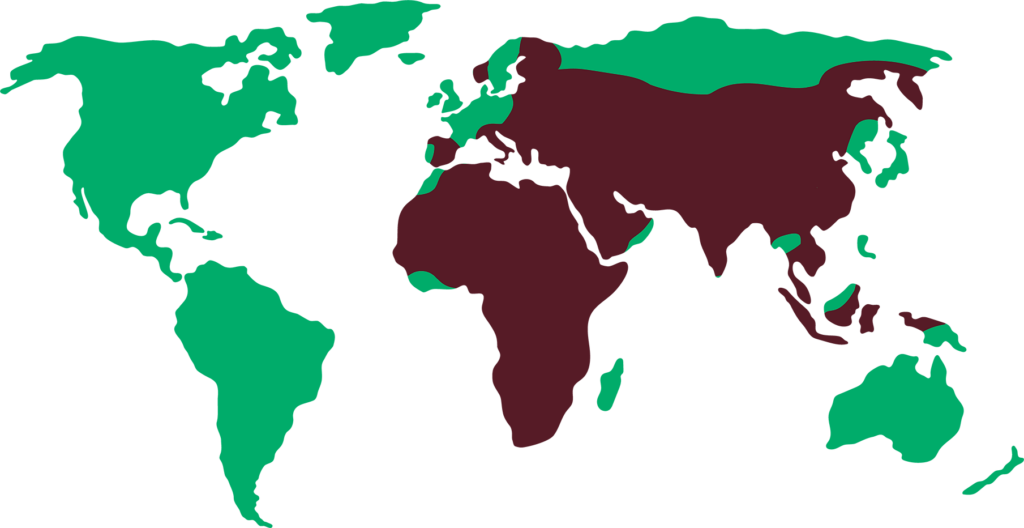GREAT WHITE PELICAN
Pelenacus onocrotalus

LENGTH

1,8 m
WEIGHT

20 kg
LIFESPAN

50 years
The great white pelican is one of the largest flying birds, with a wingspan ranging from 2.6m to 3.6m.
General characteristics
It is a large bird with a long beak and a receding neck in the shape of an S. The beak has a mixture of pink, yellow and gray colors and can measure between 30-47cm.
Its plumage turns from grayish to white when they reach adulthood, with black wing tips. It is very easy to identify the pelican from other birds because of the yellow extensible pouch under its beak.
The legs are pink and have an interdigital membrane between the four toes of each leg that facilitates the take-off and landing on the surface of the sea.
Although they may appear clumsy because of their size, they are elegant fliers and can fly day and night covering distances of up to 480km.
Feeding
Mainly fish, but they also catch crustaceans, amphibians and even turtles with their beaks.
Behaviour
They are highly gregarious. They tend to fly in V-shaped flocks or nest in colonies close to each other. Northern populations are migratory, flying to the south during winter.
When hunting for food, they hunt in teams of 8 to 12 pelicans that corral fish in the water, forcing them to come to the surface, and at the same time they insert their beaks into the water to capture them. Pelicans use the gular pouch as a net: they push their beaks underwater, filling the pouch with water and fish; as they lift their heads, they contract the pouch and expel the water, retaining the fish.
They feed in the early morning hours and spend the rest of the day preening and bathing.
Their flight call is a deep, low-pitched squawk, like all the sounds they make, but they are usually very quiet.
Reproduction
Depending on where they are located, the months of reproduction may vary, but in general it is usually when the weather is warm. Males exhibit themselves in front of females and both show a change of color in their plumage: males become more pink and females more orange.
In a clutch, the female can lay from 2 to 4 eggs and incubation takes 29 to 36 days. Chicks are naked when they hatch and fledge at 2 months of age. Both parents take care of the chicks until they can fly on their own.
Threats
Food shortage due to overfishing and habitat loss because of pollution.
Distribution
They are distributed in southeastern Europe, Africa and Asia. They inhabit swampy areas and river deltas.

Did you know?
Male pelicans threaten intruders by spreading their wings, crouching, opening and closing their beaks, which they also use as a weapon.
They regurgitate food to scare the enemy away with the smell.
The chicks stick their heads completely down the throat of the parents, looking for the fish that has been brought to them.
Conservation status
